The overview of the problem and the solution and my thoughts are as below.
"/*" represents about my comment.
We'll handle the \$3\$ point charges in the vacuum.
Firstly the \$2\$ charges are arranged in the same straight line. The remaining \$1\$ charge is positioned at the above of the mid point of the line segment of the previous \$2\$ charges.
The concrete values of it are as below.
\$q_1:=5.0*10^{3}[C]\$(left side charge of the line segment.)
\$q_2:=-5.0*10^{3}[C]\$(right side charge of the line segment.)
\$q_3:=?[C]\$(magnitude of the top charge)
\$x:=2[m]\$(distance between the \$q_1,q_2\$.)
\$y:=1.5[m]\$(distance between the \$q_3\$ and the any charge of the line segment)
\$f:=8.0*10^{5}[N]\$(force which is created from the \$3\$ charges at the top charge.The direction of it is horizontal from left to right)
Firstly the official answer says that the top charge is a positive charge since \$f\$ is horizontal from left to right.
/* Currently I am unable to get the above statement. */
\$f':=\$the amount of the force between the left charge and the top charge.
\$f'=\frac{1.5[m]}{2.0[m]}*(8.0*10^{5})[N]\$
/* Thought that the approximation of the triangle of the degree of \$45\$ of \$1,1,\sqrt 2\$ was taken. */
\$k:=\frac{1}{4*\pi\epsilon_0}\$
Lastly,\$f'=\frac{k*Q_1*Q_3}{y^2}\$ is true ,so the value of \$Q_3\$ is able to be calculated.
Is it true when the top charge is negative then the direction of \$f\$ will be horizontal from right to left? If so,please tell me why this could be proven.
Can anyone tell me that why the charge of the top side is positive?
